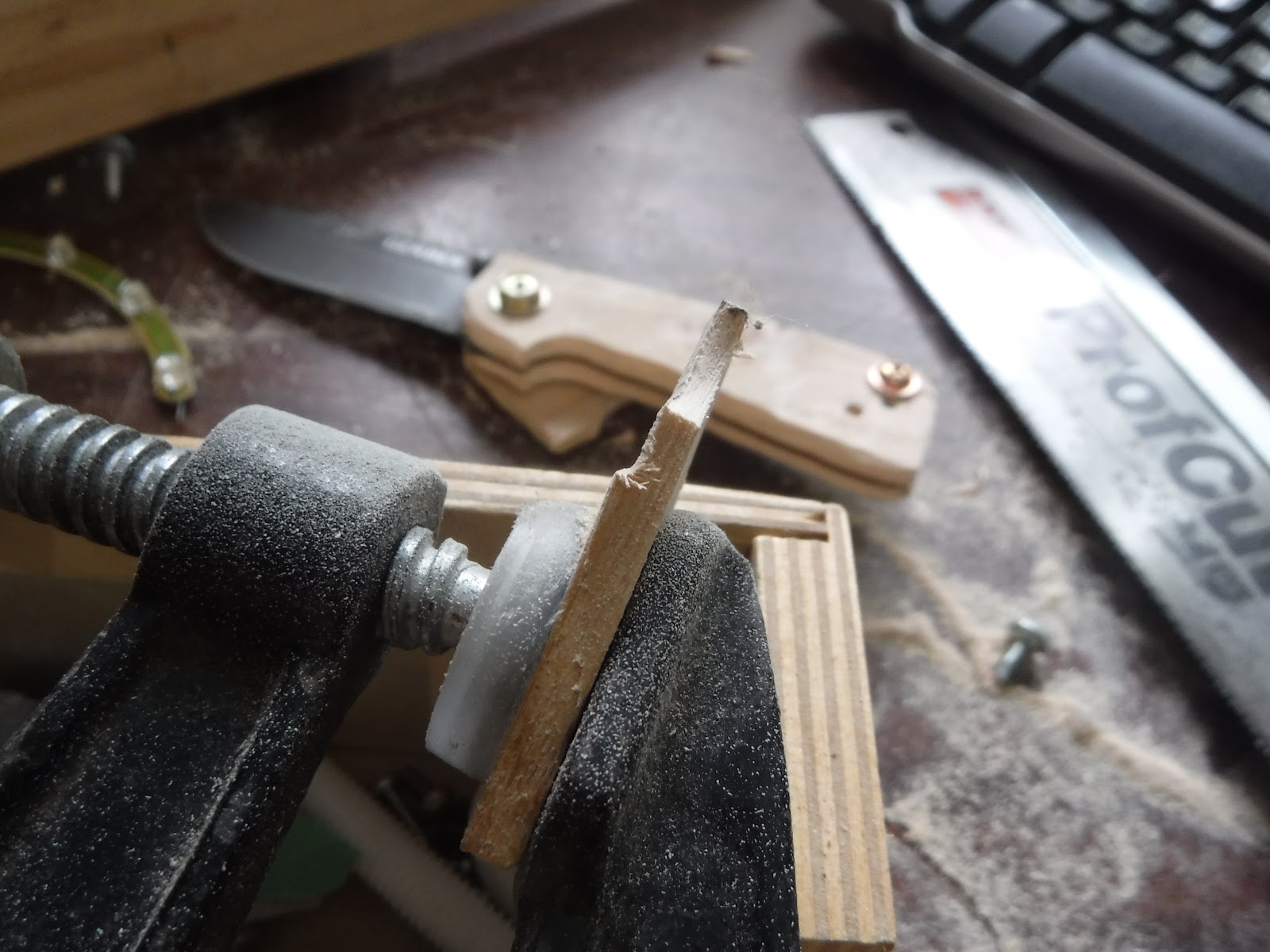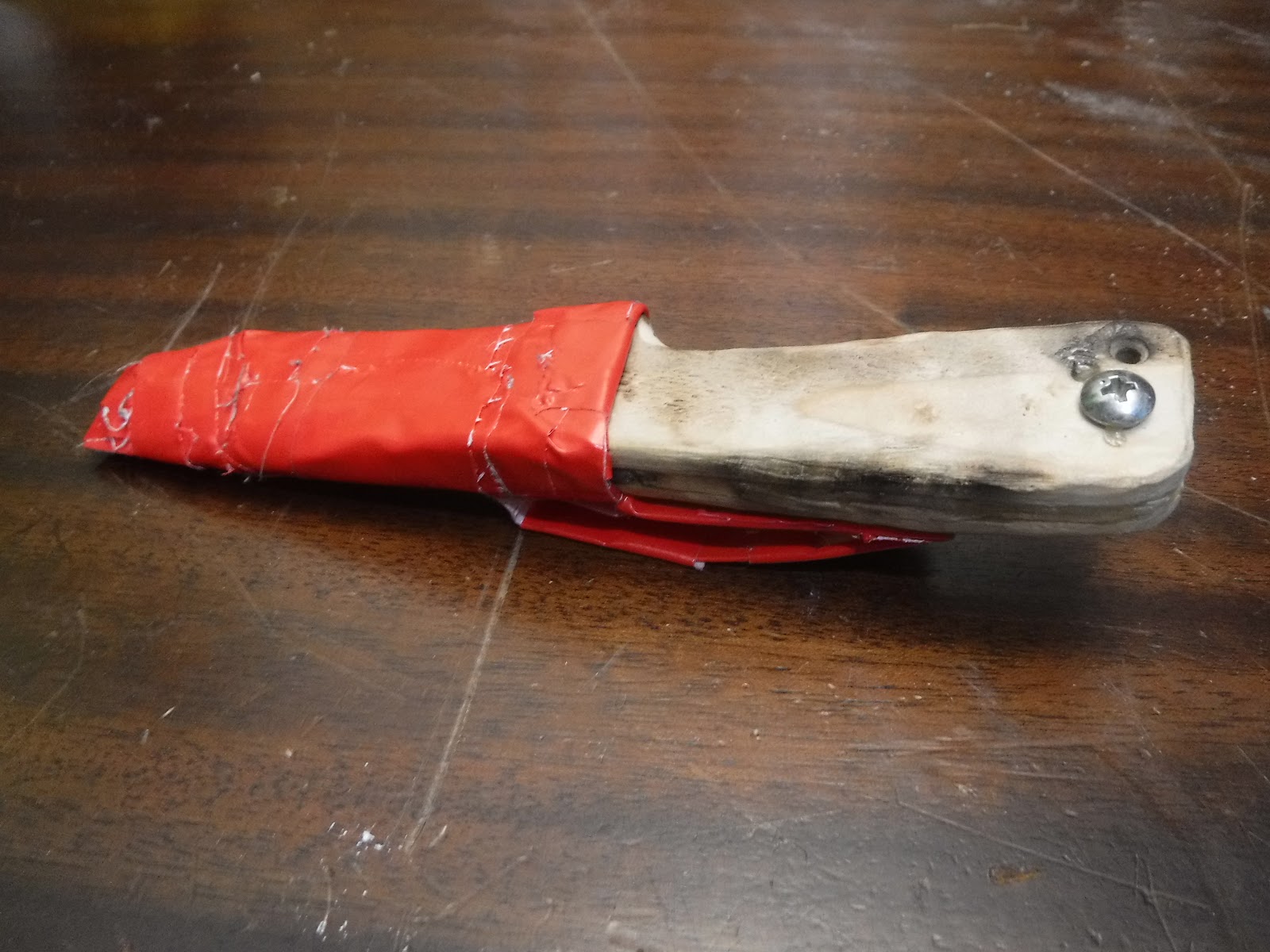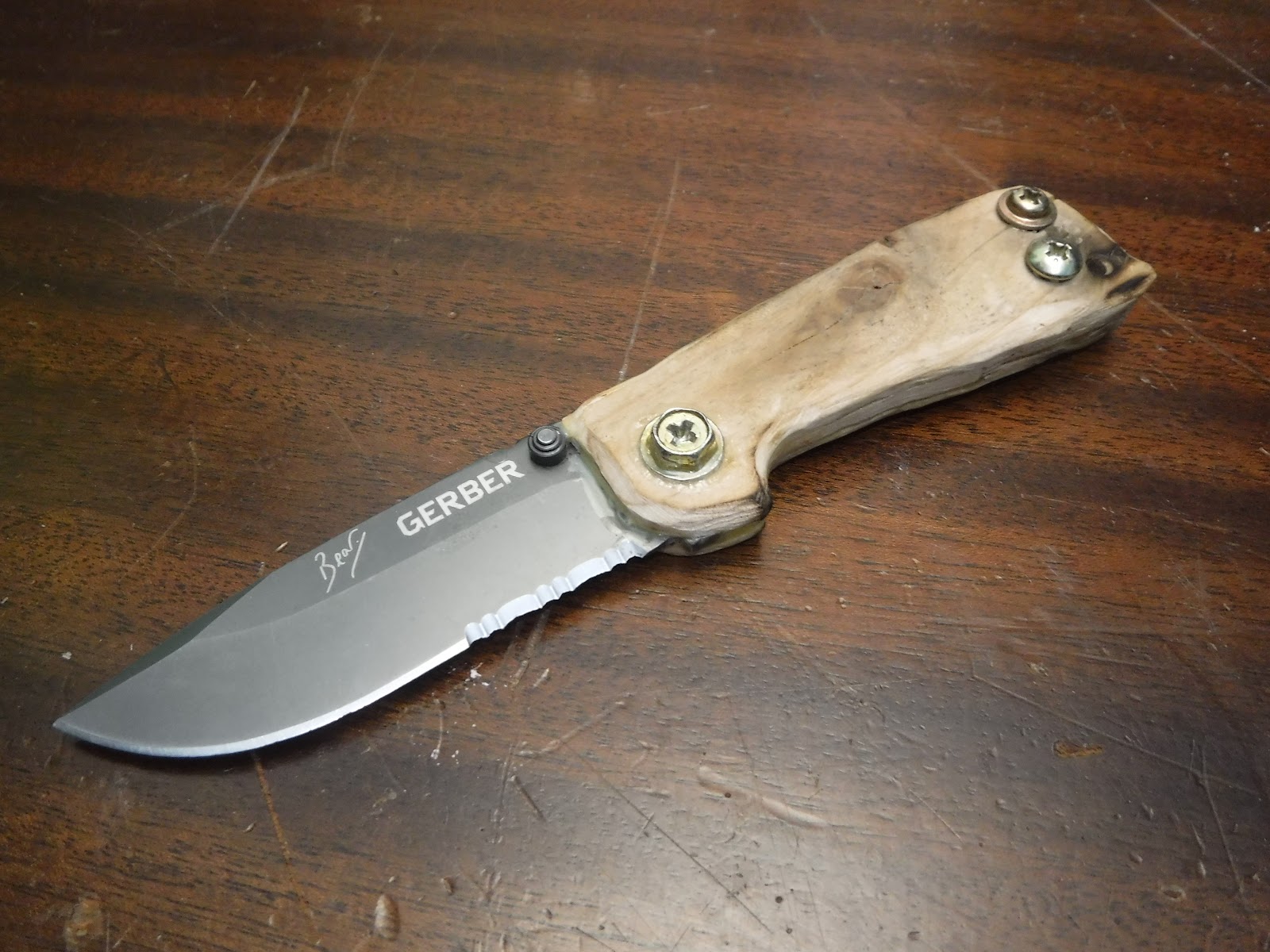A few months ago my knife melted. Well, the handle did at least.
I managed to get the blade out of the plasticy mess, but it’s hard to use a knife without a handle.
I figured I’d make a new one, but it looked hard- it was the flip-in blade type of knife, so there wasn’t much
of the blade to attach a new handle to. There was a hole in the end of the blade, which could be used to
attach a new handle, but it had a bolt in it. So I got a new knife.
I recently found that lonely blade, and I realized I could just cut off the bolt thing (I’m not sure why I didn’t
do this before). So I did, and then I made a new handle for it.
Steps to Making a Knife Handle:
- Get all the extra stuff off the blade (ie. the bolt that used to hold it to the original handle
- Find to thin pieces of wood to use for the main structure of the handle
- Drill a hole in the end for the bolt holding in the blade
- Attach the long metal piece on the back to also hold the blade
- Measure and then cut the wood to roughly the right shape and size
- Screw all the bits and pieces together
- Add more thin wood in the middle and then glue
- Sand
Here are some pictures of the process: (I didn’t get pictures of the first steps)



















